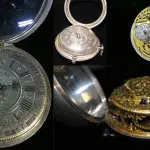
A box of teeth and scientific serendipity unveil the lives of bottlenose whales
HALIFAX — The walnut-sized teeth taken from northern bottlenose whales slaughtered in the 1960s and 70s are proving to be storehouses of knowledge that raise awareness about the fragile future of the endangered species.
Dalhousie University researcher Laura Feyrer found she and other researchers could only observe the elusive mammals from rare sightings far off the coast of Nova Scotia, when their distinctive bulbous foreheads and beak-like mouths occasionally emerged from their deep dives.
It wasn’t sufficient to properly observe the whales’ behaviour, or to enhance the scant knowledge of their life patterns.
But Feyrer and her collaborators came up with a technique to probe the life stories of the whales through a box of teeth taken from the animals by whalers off the coast of Labrador and Iceland, and retained by scientists at the Norwegian Institute of Marine Research for future study.


